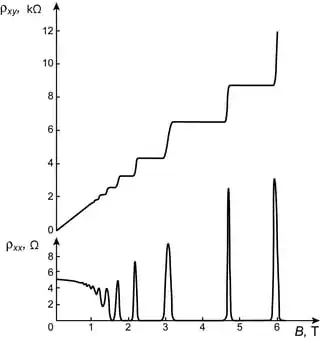I was wondering why the plateaus of $\rho_{xy}$ in the integer quantum Hall effect are horizontal and do not scale linearly with the magnetic field $B$ since the Lorentz force should still be acting on the electrons.
I understand that by increasing the magnetic field B, new Landau levels become available which contribute to the discrete jumps of $\rho_{xy}$, but those electrons in the Landau levels that are already occupied should be affected by the Lorentz force (which is the underlying mechanism of the classical Hall effect) and hence I would expect them to contribute to a linear scaling of $\rho_{xy}$ as a function of B in between the discrete jumps. Instead of a linear relationship, we can see perfectly horizontal plateaus. Why is that?
